Jean Seberg verses the FBI
How J. Edgar Hoover and the FBI targeted and persecuted a Hollywood Starlet because of her political activism & support of the Civil Rights Movement
When we hear the name Joan of Arc, we conjure an image in our heads. For me, it's a teenage European woman with cropped hair, high cheekbones, a full mouth, and, of course, a pious look on her face. She gazes upwards in prayer.
Yet, all of this is wrong. Joan of Arc was also short, stocky, and had a red birthmark behind her right ear. The vision in my head of the Maid of Orleans is actually not her at all—it is of Jean Seberg—and that image, my friends, was brought to me by the power of motion pictures.
It was 1956 when 18-year-old Jean Seberg was plucked out of obscurity by the notable Hollywood director/producer Otto Preminger. She was one of 18,000 girls and young women to apply for the role of the French peasant girl who led the French Army to victory over the English in 1429.
Of those 18,000, Preminger only auditioned 3,000, which is still a staggering amount of people to wade through, but Preminger had a vision. He had seen George Bernard Shaw's 1923 play Saint Joan, and he wanted his actress to have similar characteristics to Sybil Thorndike – who it is said G.B. Shaw wrote the role of Joan for.1
So, the Oscar-winning Director (Laura) hand-picked Jean Seberg, the young midwestern teen born on 13 November 1938 in Marshalltown, Iowa, to be the lead in his adaptation of Saint Joan. Then, on 8 May 1957, Saint Joan was released—and it failed miserably. Seberg was dubbed "Joan of Iowa" for being burned alive—just like Joan of Arc—twice.
Once on set when a gas jet exploded on set, and second, when the film debuted.
But this wouldn't keep Jean Seberg down. Honestly, it was just the beginning of her career. Only a few years later, in 1960, Seberg rocketed to stardom, but not because of her work in Hollywood, California. She would find fame in Paris, France. (footnote: Jean Seberg was in two movies between Saint Joan and Breathless.)
OK– quick pause – you may be wondering how a young, and beautiful, film actress found a slot in my “Rebels and Revolutionaries” category, so here is a clue – the Civil Right Movement.
But we’re not quite there yet…
First, we need to go to Paris. Jean-Luc Godard, a French pioneer of the New Wave movement, cast Jean Seberg in his first feature film À, bout de souffle (Breathless).
Her pixie haircut, effortless style, and compelling performance captivated audiences worldwide, cementing her status as a cinematic and cultural icon. She bridged the gap between American and European cinema, embodying a fresh and daring modernity.
Most of all, Seberg became a symbol of youthful rebellion, something she took to heart.
Like many other young stars in the 1960s, Jean Seberg used her celebrity to bring awareness and attention to issues important to her to the world in the hope of making real change. It wasn't difficult for her to decide which issue would get her attention. That part was simple. It was the NAACP2, an organization she joined in 1954, years before she became Joan of Arc.
Jean Seberg and the Black Panthers
While her on-screen roles brought her international fame, Seberg's off-screen life revealed a more profound commitment to justice and equality. By the late 1960s, she had become an outspoken advocate for civil rights. She aligned herself with the Black Panther Party, a revolutionary group fighting for racial justice in the United States. Her support was not merely symbolic; Seberg donated significant sums of money to the Panthers and used her platform to amplify their message.
But she wasn't alone in her desire to help those around them rise above the oppression holding them back. Many others, like Marlon Brando and Jane Fonda, supported the Panthers, and just like Jean, both of them were targeted by the FBI. All three were dubbed "public nuisances," just like Dr. Martin Luther King Jr., Malcolm X, and the Black Panthers.
This activism was a bold move for a Hollywood actress at the time, especially one with a flourishing career, but it was a new world in post-WWII America. The cold war had been battling for some time, and the younger generation was growing tired of living in the shadow of their parents. They wanted to break free of the conformity embraced in post-war culture in America.
Mostly, they wanted to think for themselves, like the Beat Generation had embraced non-conformity, individuality, and rejection of the mainstream societal norms and materialism. Young people born during the Silent Generation (1928-1945) endured the Great Depression and World War II and tend to be listed as "silent" due to the want to avoid confrontation. Still, the Silent Generation also cultivated people like Jean Seberg, who sought to advocate for social equality. They had grown up with very little and lived their formative years during a time rife with social inequalities that were highlighted during World War II as they read about the Nazi camps in Europe. They didn't want that separation in America
While some of the Silent Generation wanted nothing but security, other craved equality, individuality, and freedom—something they had seen the United States fight for in Europe and the Pacific.
Between her childhood in Marshalltown, Iowa—a key location that manufactured "Beverly shears"3 —and her time in the cultural epicenter of Paris, mixed with her desire to help others and how well-read she was, only made her decision to align with the Panthers, her destiny.
However, it also made her a target for the FBI's Counter Intelligence Program (COINTELPRO), an initiative spearheaded by J. Edgar Hoover. The program aimed to discredit and neutralize individuals and organizations deemed subversive, often using illegal and unethical tactics.
One of these “individuals” was Jean Seberg.
The FBI Smear Campaign
In 1970, the FBI launched a smear campaign to tarnish Seberg's reputation. They planted a false story in the media alleging that Seberg was pregnant with the child of a prominent Black Panther member.
The fabricated story made its way into gossip columns and Newsweek Magazine, causing a public scandal and adding even more stress to Seberg's rocky marriage to Romain Gary, a French author and diplomat. Only a year before, Seberg had a torrid affair with Clint Eastwood on the set of Paint Your Wagon, so the fabricated gossip leaked by the FBI was unwanted pressure added to the union between Seberg and Gary.
The couple tried to reconcile their marriage, which was why Seberg was pregnant at the time the FBI campaign began. She was devastated by the rumor suggesting she and Raymond Hewitt – one of the leaders of the Black Panthers. While Seberg was friends with Hewitt, there is no proof it ever went beyond that.
The stress and humiliation reportedly contributed to the premature birth and subsequent death of her baby girl, whom Seberg publicly buried in a transparent coffin to dispel the lies about the child's paternity.4
The psychological toll of this campaign was immense. Seberg's mental health deteriorated as she struggled to cope with the relentless harassment, including surveillance, wiretapping, and continued defamation. Friends and colleagues noted her increasing paranoia and isolation, both fueled by the FBI's deliberate efforts to destabilize her life.
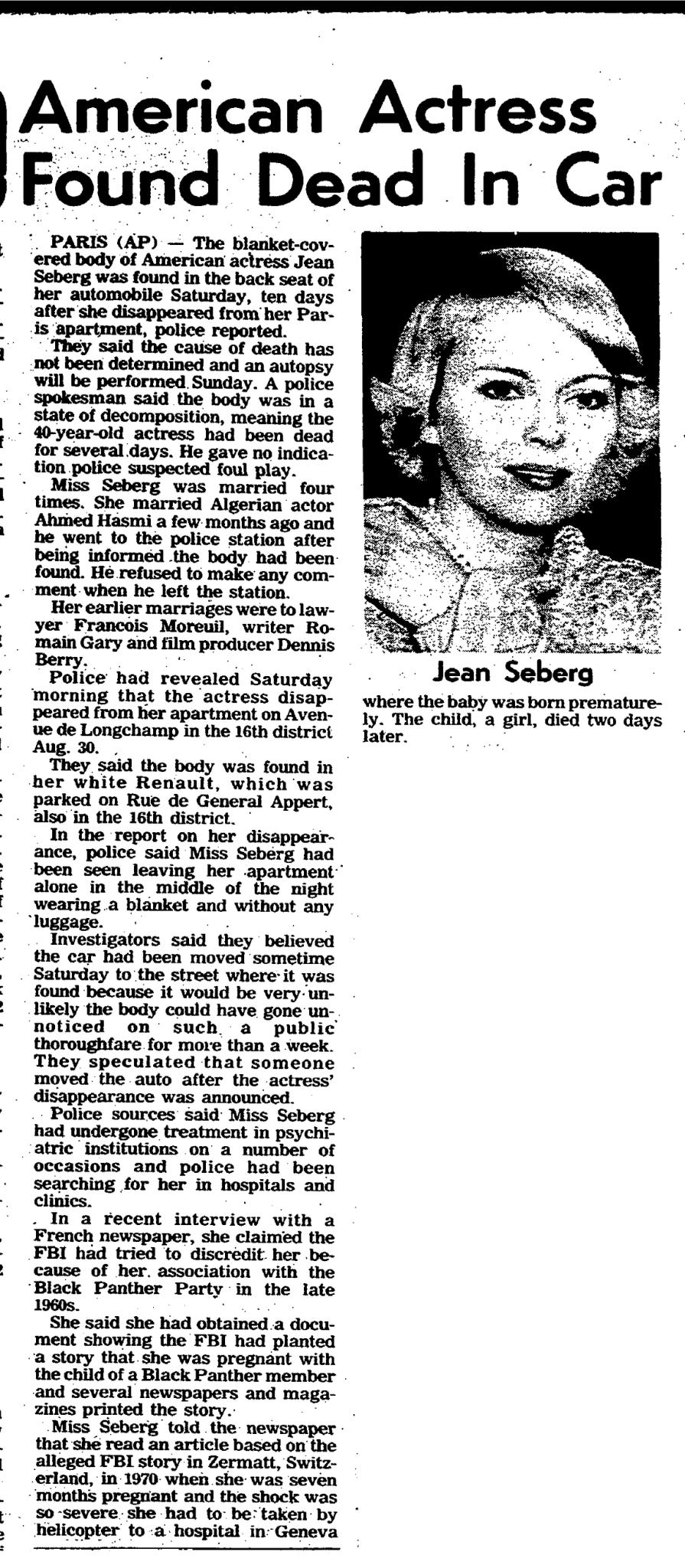
A Tragic End
On August 30, 1979, Jean Seberg's body was discovered in her car in Paris. The official cause of death was ruled a probable suicide, though the circumstances surrounding her death remain shrouded in mystery. She was only 40 years old. In her final years, Seberg had become a shadow of the vibrant star who had once lit up the screen, worn down by years of harassment and betrayal. Some may point out different choices Seberg made during her lifetime, but at the end of the day, the brutal campaign led by the FBI to destabilize and discredit her is what led to her life ending so early.
Within days of her death, news broke around the world of the FBI's smear campaign.
Jean Seberg's story is one of extraordinary talent and courage and the devastating consequences of state-sponsored persecution–something we tend to pin on countries outside the United States but also happens here.
She symbolizes the dangers faced by those who dare to challenge the status quo. In recent years, her life and career have been reevaluated, with many recognizing her as both a cinematic pioneer and a martyr for justice. In 2019, the film SEBERG, starring Kristen Stewart, was released, showing that people aren't ready to stop talking about her.
While I haven't seen the movie, I picked Jean Seberg for my Rebels and Revolutionary posts because I wanted to spotlight a woman who lived a complicated and very human life that was cut short due to her belief in helping others. Today, Jean Seberg's legacy endures, not only in the films that made her an icon but also in her example of using fame to fight for a better world—despite the personal cost.
Even if she didn't realize she had made that choice.5
To learn more about about my genealogy services - head over to GenealogybyAryn.com.
I’m also on Bluesky - Instagram - Facebook - YouTube, and be sure to check out my Etsy Shop and stop by my Genealogy Shop.
The first actor to play Joan of Arc in Shaw's production on Broadway was Winifred Lenihan.
National Association for the Advancement of Colored People
A metal cutting tool designed to easily cut irregular shapes in metal and allow for quick modification and repairs on the battlefield.
While Hewitt was not the father of Seberg’s baby, neither was Romain Gary. Before she died, Seberg admitted the father was a man named Carlos Ornelas Navarra, a student revolutionary. This was mentioned in the book Going Crazy by Otto Friedrich p. 230, which was published in 1975, four years before her death.
This post only covers portions of Jean Seberg’s life. She was married three times, had friends and family who she loved and who loved her. She was also in some iconic films, like, Airport (1970) and Lilith (1964), and she worked with a second time on the film Bonjour Tristesse in 1958, right after they finished Saint Joan.





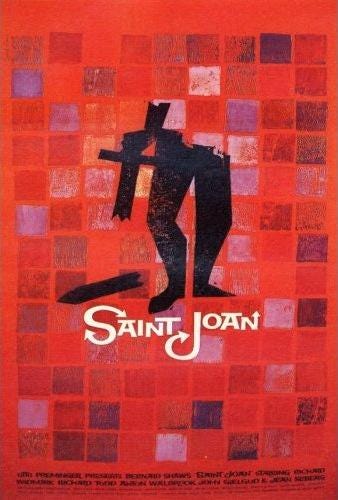


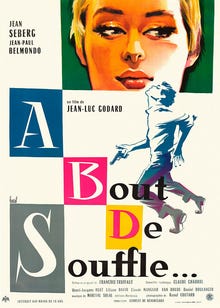
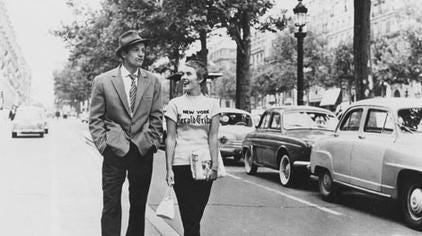
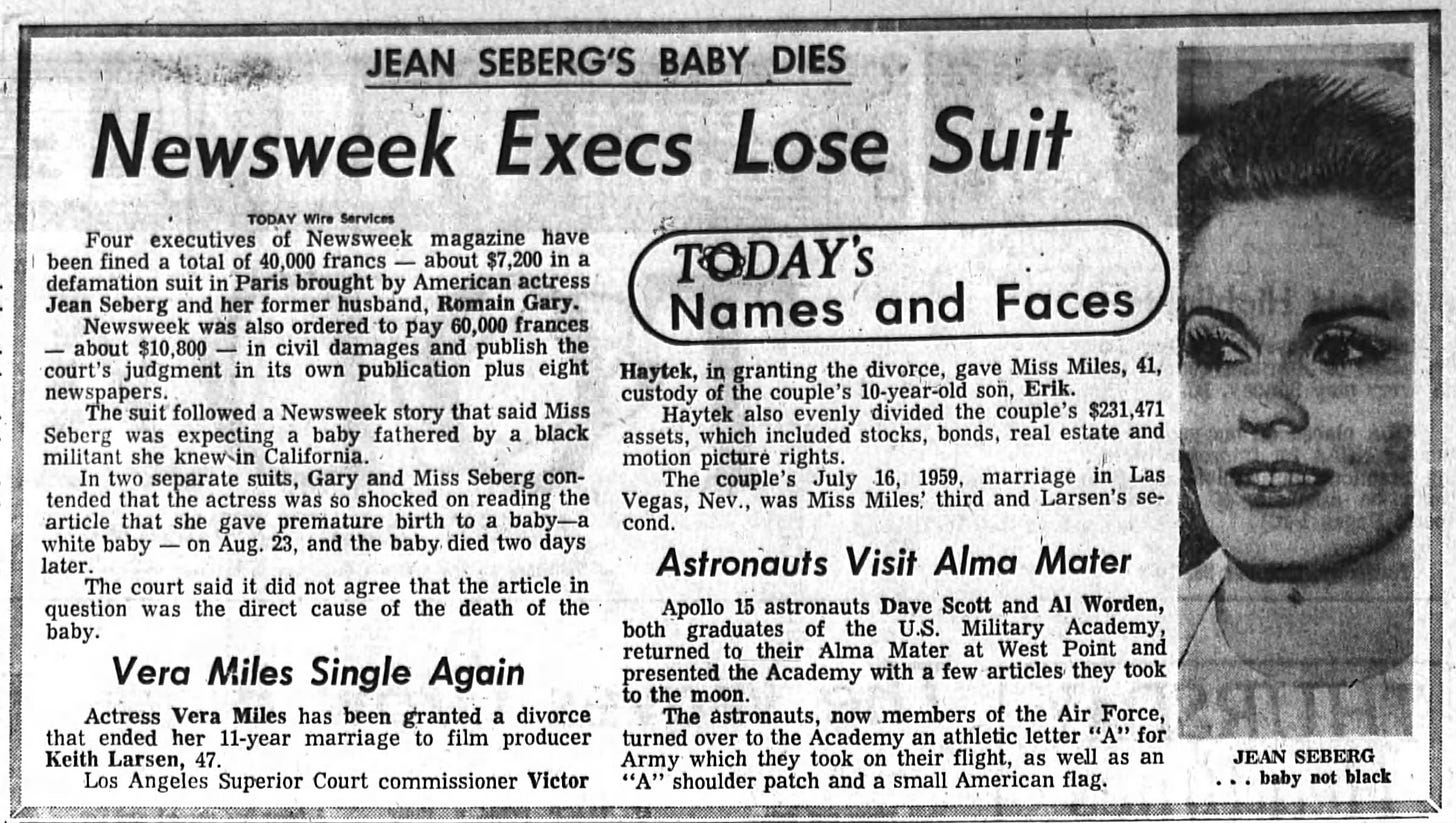
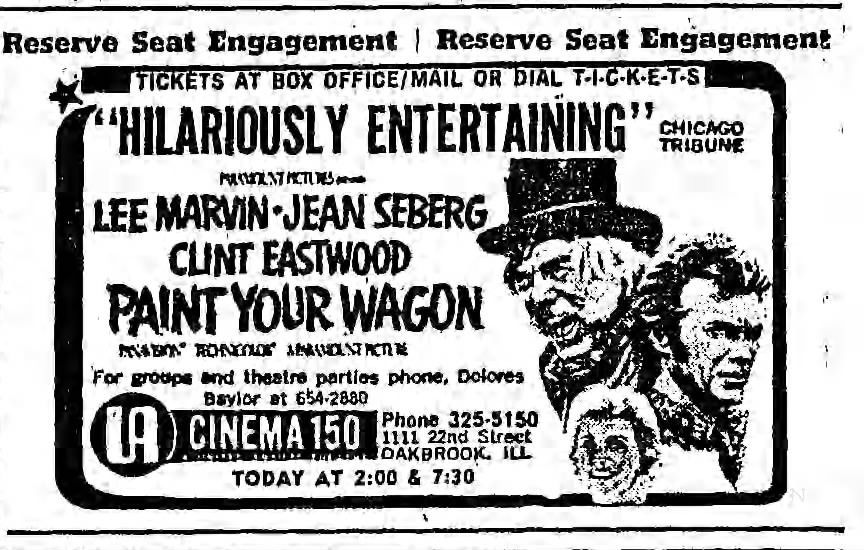
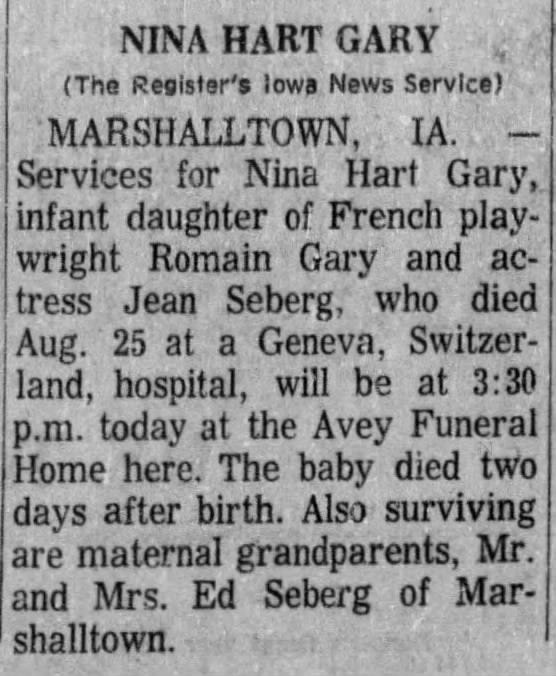

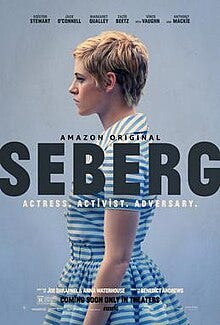

Bravo, a compelling story, beautifully told.